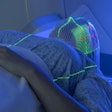A U.S. Department of Veterans Affairs (VA) hospital in Philadelphia has botched more than three-fourths of the prostate cancer brachytherapy procedures it has performed in recent years and, until recently, largely avoided clinical or regulatory oversight, according to an article published June 21 in the New York Times.
The New York Times reported Sunday that 79.3% of all prostate cancer brachytherapy procedures were incorrectly performed at the Philadelphia VA Medical Center (VAMC) since the facility began offering the treatment in 2002. Treatment problems ranged from brachytherapy seeds placed in healthy organs to seeds of incorrect radiation dose levels used in patients.
In addition to jeopardizing the health of 92 prostate cancer patients, the radiation oncology department operated for at least six years without peer review, allegedly allowed a radiation oncologist to modify clinical records to cover up serious treatment mistakes, and allowed brachytherapy procedures to be performed for more than a year when critical equipment that calculated radiation dose was unavailable, the story claims.
Furthermore, once the Philadelphia VA Medical Center's radiation safety committee and hospital administrators became aware of the problems, they did not report them to federal regulators, according to New York Times investigative reporter Walt Bogdanich. The Times also states that the Nuclear Regulatory Commission (NRC), the Joint Commission, and the national VA safety unit failed to intervene, either because their inspections were limited and inadequate, or because these investigative organizations did not intervene decisively after problems were discovered.
How widespread quality control problems are within the radiation oncology departments of VA medical centers is unknown. Brachytherapy implant treatment programs have been suspended at the VAMCs in Cincinnati and Jackson, MS, and investigations are ongoing.
According to the New York Times, the Philadelphia VAMC, which provides services to more than 361,000 military veterans living in an eight-county area of New Jersey and Pennsylvania, began offering brachytherapy as a treatment option for prostate cancer patients in 2002. It contracted with the University of Pennsylvania School of Medicine in Philadelphia to provide board-certified radiation oncologists to perform the procedures.
Dr. Gary Kao, Ph.D., assistant professor of radiation oncology at the School of Medicine and a practicing radiation oncologist in the department of radiation oncology at the Perelman Center for Advanced Medicine of the University of Pennsylvania Health System, was one of the physicians contracted.
Medical records show that in 2002 nine implant procedures were substandard, including two performed on the same day, the New York Times reported. During a procedure in 2003, Kao implanted 40 radioactive seeds in the bladder of a patient, and allegedly rewrote his surgical plan to match the number of seeds in the prostate. The patient underwent a second procedure, which also failed according to unspecified investigators, and which gave the patient a radioactive dose to the rectum. This latter failure was never reported, the New York Times report claims.
Kao allegedly rewrote a second surgical plan in 2005 following a procedure when only 50% of the radioactive seeds were properly implanted and the remaining seeds were placed in healthy organs.
An additional 90 out of 116 brachytherapy prostate cancer procedures were improperly performed, the majority by Kao, between 2002 and June 11, 2008, when the Department of Veterans Affairs shut down the program, according to unspecified public records and Bogdanich's interviews with unspecified investigators and government officials. Dr. Ronald Goans, Ph.D., an NRC consultant, reviewed about 25% of the 92 substandard procedures and reported that of these, erratic seed placement caused a number of cases to have elevated radiation doses to the rectum, bladder, or perineum.
The VA's investigation of the program began in the spring of 2008, after a radiation safety official incorrectly ordered radioactive seeds of a lower strength, which were subsequently implanted in patients. This error was reported to the VA national radiation safety unit, which requested that the hospital examine 10 to 20 prior cases to determine if this had happened previously. In this initial investigation, hospital officials discovered that radioactive seeds had been improperly implanted in four patients. By June 11, 45 cases had been identified.
By coincidence, the Joint Commission conducted an accreditation survey on June 13 and reaccredited the hospital on June 15. It did not discover the VA's brachytherapy investigation, nor did hospital officials report this to investigators.
The NRC initiated an investigation shortly thereafter. It discovered that 35 cases involved radiation overdoses to other parts of the body, and 57 implants delivered too little radiation to the prostate, either because the seeds missed the prostate or were not distributed properly inside the prostate, the New York Times story reports.
Additionally, the NRC discovered that from December 2006 to November 2007, computer interface problems prevented radiation oncologists from determining the radiation dose to patients. The VA's radiation officials knew of the problem, but took no action.
Although he is listed on the University of Pennsylvania Health System Web site as a practicing clinical radiation oncologist, the New York Times reports that Susan Phillips, a senior executive, stated that Kao has voluntarily given up clinical privileges. He is one of four professors leading research to study the acute effects of space radiation, as part of a five-year, $10 million grant awarded to the University of Pennsylvania School of Medicine in 2008 to establish a National Space Biomedical Research Institute (NSBRI) Center of Acute Radiation Research for this purpose.
The New York Times' check of state and federal records since 1999 did not uncover any malpractice or disciplinary actions against Kao.
The VA sent seven of the patients to its most experienced brachytherapy treatment facility in Seattle for additional treatments. The fate of 98 patients is unknown.
By Cynthia E. Keen
AuntMinnie.com staff writer
June 23, 2009
Related Reading
Options abound for radiation therapy QC, August 19, 2008
QA tool cuts errors in radiation oncology department, August 6, 2008
Copyright © 2009 AuntMinnie.com



















